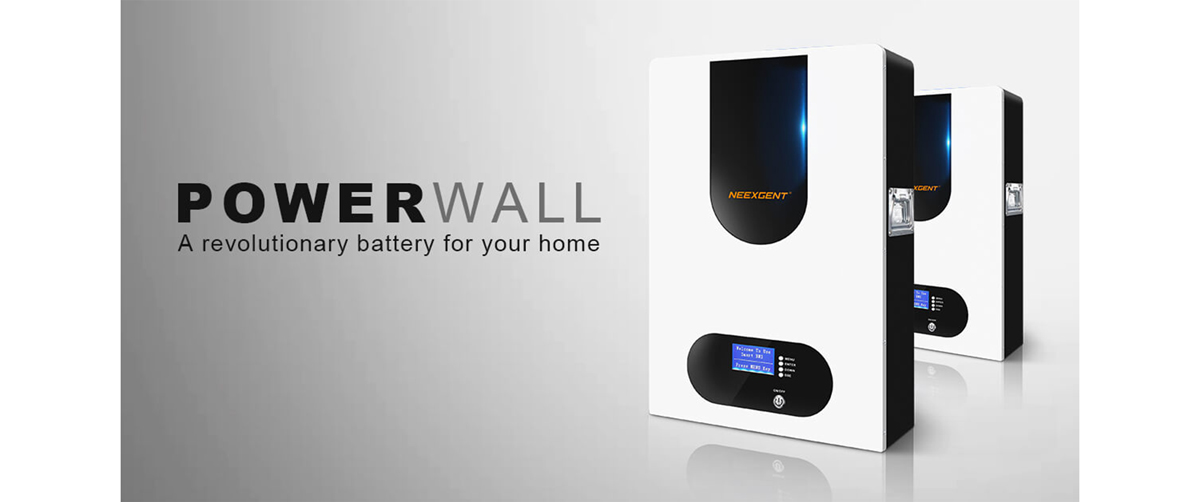With the growing interest in renewable energy and the need for sustainable power solutions, the demand for energy storage systems has significantly increased. Among the various storage technologies, wall-mounted batteries have gained significant popularity due to their versatility, compact design, and ease of installation. In this article, we will delve into European wall-mounted batteries, examining their advantages, technological advancements, and the challenges associated with their implementation.

NEEXGENT NX-48100Powerwall Battery
1. The Rise of Wall-Mounted Batteries:
The European region has been at the forefront of renewable energy adoption, with countries like Germany, Denmark, and Spain leading the way. Wall-mounted batteries have emerged as a key component in the integration of renewable energy sources, such as solar and wind power, into the grid. These batteries allow for efficient storage of excess energy generated during periods of high production, which can be utilized during periods of low production or high demand, thus ensuring a reliable and stable power supply.
2. Advantages of European Wall-Mounted Batteries:
- Energy Independence: One of the primary benefits of wall-mounted batteries is their ability to provide energy independence to households and businesses. By storing excess electricity generated from renewable sources, users can reduce their dependence on the grid and optimize their energy consumption. This leads to lower energy costs and increased resilience against power outages.
- Peak Load Management: Wall-mounted batteries are instrumental in managing peak loads, which occur when demand for electricity is at its highest. By discharging stored energy during these periods, batteries help alleviate strain on the grid, ensuring a more stable and efficient energy distribution system.
- Grid Stabilization: Renewable energy sources are often intermittent, resulting in fluctuations in power generation. Wall-mounted batteries can smooth out these fluctuations by storing surplus energy during times of high production and supplying it back to the grid during periods of low production. This improves grid stability and reliability.
- Environmental Benefits: By facilitating the integration of renewable energy sources, wall-mounted batteries play a crucial role in reducing greenhouse gas emissions and combating climate change. They enable the efficient utilization of clean energy, minimizing the need for fossil fuel-based power generation.
- Technological Advancements: European wall-mounted battery manufacturers are continually innovating to enhance their products' performance and efficiency. Advancements include:
- Increased Energy Density: Efforts are being made to improve the energy density of batteries, allowing for more energy storage within a compact form factor. This results in smaller, more powerful battery systems that can fit seamlessly into residential and commercial spaces.
- Longer Cycle Life: Manufacturers are focusing on extending the lifespan of batteries, ensuring they can withstand a greater number of charge-discharge cycles. This improvement increases the overall reliability and longevity of wall-mounted batteries, making them a more cost-effective solution for end-users.
- Enhanced Safety Features: Safety is a crucial aspect of battery technology. European manufacturers are implementing advanced safety features such as thermal management systems, built-in fire suppression mechanisms, and improved battery chemistries to mitigate the risk of accidents and ensure user confidence.
4. Challenges and Considerations:
- Cost: The initial cost of wall-mounted batteries can be a deterrent for some consumers. However, falling battery prices, government incentives, and the long-term financial benefits of energy independence are making them a more viable option.
- Integration with the Grid: Integrating wall-mounted batteries into existing electrical infrastructure can pose technical challenges. Ensuring compatibility, optimizing energy flow, and addressing grid regulations are critical aspects that need to be carefully managed during the installation process.
- Raw Material Supply and Recycling: The production of batteries requires raw materials such as lithium, cobalt, nickel, and graphite. Ensuring a sustainable supply chain for these materials is essential to avoid potential environmental and social impacts associated with their extraction. European manufacturers are increasingly emphasizing responsible sourcing and exploring recycling initiatives to minimize the environmental footprint of battery production and disposal.
- System Integration and Control: Integrating wall-mounted batteries into a comprehensive energy management system can be complex. Ensuring seamless communication between the battery, renewable energy sources, and energy consumption patterns requires advanced control systems and smart grid technologies. European manufacturers are actively working on developing sophisticated software solutions to optimize energy flow, monitor performance, and enable intelligent energy management.

5. European Initiatives and Support:
The European Union (EU) has recognized the importance of energy storage technologies and has implemented various initiatives to support their development and deployment. The European Battery Alliance aims to establish a sustainable and competitive battery industry within Europe, promoting research, innovation, and collaboration among stakeholders. Additionally, funding programs and regulatory frameworks are being put in place to encourage the adoption of energy storage systems, including wall-mounted batteries, across the region.
6. Case Studies and Success Stories:
Several European countries have already made significant strides in utilizing wall-mounted batteries to enhance their energy systems. Germany, for example, has implemented various subsidy programs to incentivize residential battery installations, resulting in a significant increase in solar-plus-storage systems. Denmark has successfully integrated wall-mounted batteries into its district heating systems, optimizing energy usage and reducing emissions. These case studies serve as inspiration for other countries and demonstrate the potential of wall-mounted batteries in transforming energy landscapes.
7. Future Outlook:
The future of European wall-mounted batteries looks promising. Technological advancements, coupled with decreasing costs, are driving their widespread adoption. As renewable energy penetration increases, wall-mounted batteries will play an increasingly crucial role in balancing supply and demand, enabling a decentralized and sustainable energy system. Furthermore, ongoing research and development efforts will continue to enhance the performance, safety, and environmental sustainability of these storage systems.
European wall-mounted batteries are revolutionizing the energy storage landscape by facilitating the integration of renewable energy sources and providing numerous benefits to end-users. Their compact design, energy independence, and grid stabilization capabilities make them a valuable asset in the transition to a sustainable energy future. While challenges such as cost, integration, and raw material supply exist, concerted efforts by European manufacturers, policymakers, and researchers are addressing these issues. With ongoing advancements and supportive initiatives, wall-mounted batteries are poised to play a pivotal role in achieving a greener and more resilient energy system in Europe and beyond.

8. Considerations for Consumers:
For consumers considering the installation of European wall-mounted batteries, there are a few key considerations to keep in mind:
- Energy Usage Patterns: Understanding your energy consumption patterns is essential in determining the appropriate capacity of the battery system. Analyze your daily energy usage, peak demand periods, and times when renewable energy generation is highest to ensure that the battery can meet your specific needs.
- Financial Analysis: Conduct a thorough financial analysis to assess the cost-effectiveness of installing a wall-mounted battery. Consider factors such as the upfront cost, potential savings on energy bills, available incentives, and the expected lifespan of the system. It may be beneficial to consult with energy experts or installers to help with this assessment.
- System Compatibility: Ensure that your existing electrical system is compatible with a wall-mounted battery installation. It is crucial to work with qualified professionals who can assess your electrical setup and make any necessary adjustments or upgrades to accommodate the battery system.
- Warranty and Maintenance: Review the warranty and maintenance provisions provided by the battery manufacturer. Understanding the warranty coverage, duration, and maintenance requirements will help you plan for any potential future servicing or repairs.
- Environmental Impact: Consider the environmental impact of the battery system, including the materials used, recycling options, and the carbon footprint associated with the production and disposal of the batteries. Opting for manufacturers with a strong commitment to sustainability and responsible practices can help minimize the environmental impact of the system.
European wall-mounted batteries offer numerous advantages, ranging from energy independence and peak load management to grid stabilization and environmental benefits. With ongoing technological advancements, supportive initiatives, and falling costs, these batteries are becoming increasingly attractive for consumers looking to embrace renewable energy and reduce their reliance on the grid. By carefully considering factors such as energy usage patterns, financial analysis, system compatibility, warranty and maintenance, and environmental impact, consumers can make informed decisions about incorporating wall-mounted batteries into their energy systems. As Europe continues to prioritize renewable energy integration, wall-mounted batteries will play a crucial role in shaping a sustainable and resilient energy future.








